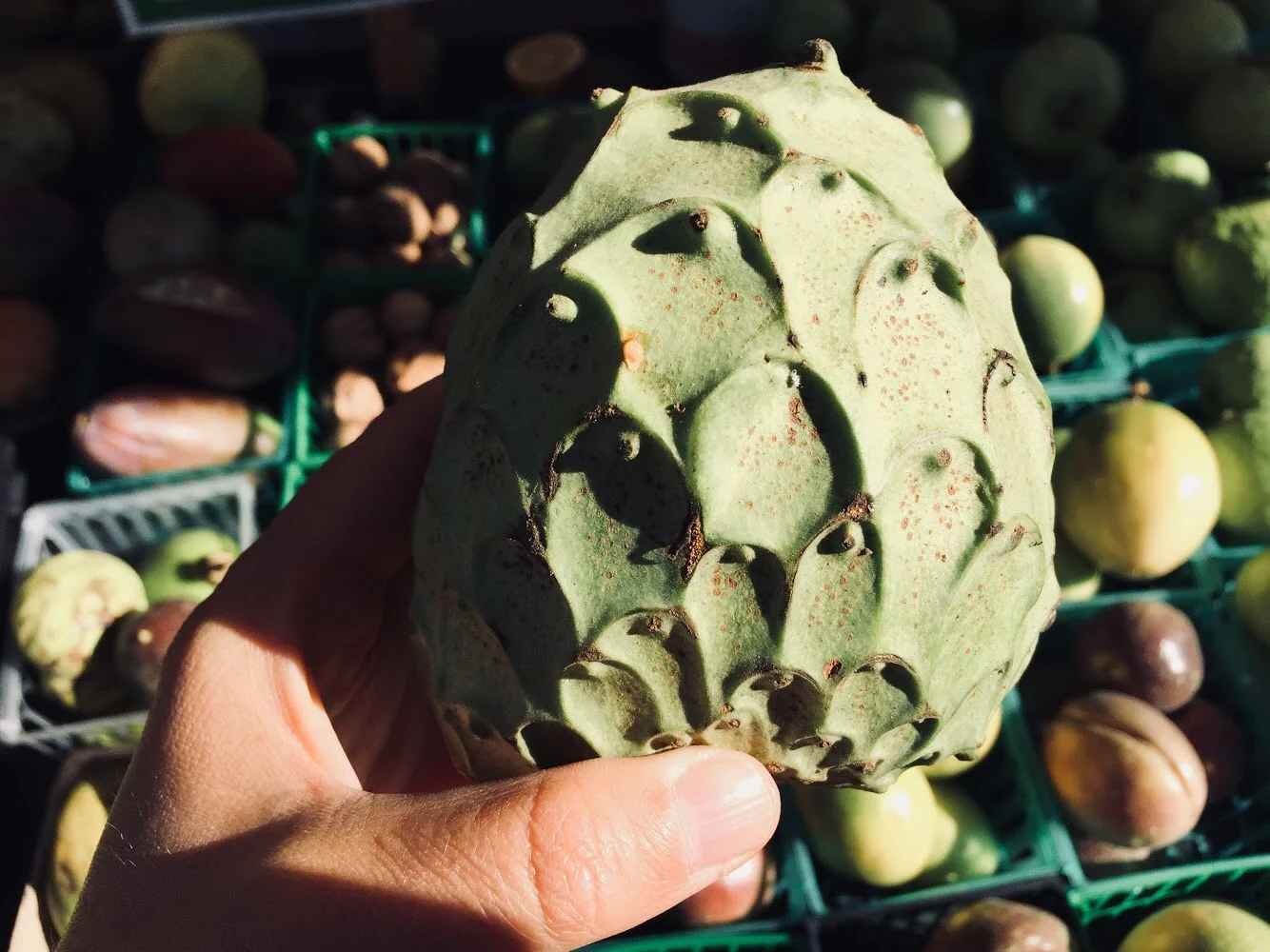Just a Teaspoon of Honey
What is the value of a teaspoon of honey? Robin of LSG Honey increases our appreciation for honey with one surprising fact.
How much honey does one bee make in its whole life? The answer may surprise you, unless you’ve met Robin Ghermezi, the apiarist and educator behind LSG Honey.
Robin Ghermezi became a beekeeper after retiring from the tech industry. He’s now been collecting honey for six years, but he still exudes the zeal of a recent convert. At the market, he’s generous with his honey samples, and if you linger long enough at his booth, he might convince you that bees are among the most fascinating creatures on earth.
When I approached his stand at the Playa Vista market on a recent Saturday, he was handing a spoonful of honey to a dazed looking customer.
“Wait,” the man said, “you’re telling me one bee makes a quarter teaspoon of honey…” he looked to the woman by his side in disbelief, “in its whole life?”
Robin grinned as he nodded.
“That means,” the man went on, “that the honey left on my spoon each morning…that’s like, one bee’s whole life’s work?” Robin was still smiling as he reached into a jar, producing a sample of honey for me to taste. It was buckwheat, the color of weak coffee and just a touch bitter: a perfect pairing for stinky cheese. I popped the sample in my mouth and for just a moment, I felt luxurious.
Robin produce more samples for me to try—avocado, wildflower, and a mesquite honey that tasted herbal and faintly smoky—and I lingered in his stall, eavesdropping on the customers beside me. They were strategizing. Robin’s story had transformed the honey in their hands into something valuable-verging-on-precious. They were determined never to waste another drop. Should they use a spoon or a wooden honey dipper? Should they leave the dipper in the honey jar permanently so it wouldn’t need washing—but what about ants?
Robin was unfazed. “One solution,” he said, shrugging, “is to drill a hole in to top of a honey jar, and poke the handle of the dipper stick through it.” Then he handed me a spoonful of lavender honey and began to laugh, conceding that they weren’t the first customers to respond to his fact with awe. At one point, so many customers were concerned about wasted honey, Robin was bringing a drill to the market, tricking-out honey jars so dippers could live in them.
The price of honey had not risen during this exchange, but it had, for me, grown vastly more valuable. For just one taste of honey, a foraging bee spent her days sipping nectar from flowers. She ferried it back to her hive in her tiny crop and, mouth to mouth, passed the nectar to a processor bee. In turn, the processor bee passed the nectar to another processor, mouth to mouth, in an intimate fire-line. Along the way, enzymes from each bee’s crop, mixed with the nectar making it shelf-stable. When the nectar was finally packed into a waxy cell, the bees fanned it with their wings, evaporating excess water, and nectar became honey. Robin tended the hive, carefully, skimmed off just enough honey, to share with us. We can put it in our tea, use it baking, or simply taste it by the teaspoon and marvel.
LSG hives are never treated with chemicals. Their bees collect nectar in nature and produce honey in their hives, one teaspoon at a time, as bees have been doing for a very long time. You can meet Robin and sample LSG honey at the Playa Vista Farmers’ market every Saturday from 9am-2pm.
Aubrey Yarbrough is the Community Development Manager for Farmer Mark. Before moving to LA she ran her own organic farm and cooked on the garde manger station of the award winning Elements restaurant in Princeton, NJ. She has contributed poetry to New American Writing and prose to Edible Jersey.
In Season Now: Ice Cream Beans!
A bean that tastes like ice cream? It might sounds too good to be true, but these beans are both real and good for you!
Q: What looks like a fava bean and tastes like ice cream… ?
A: Ice-cream beans!
Botanically speaking, the ice cream bean, or Inga Edulis, is in the same family as green beans and peanuts. But rather than eating the seed inside the pod, you focus on the pith. The fluffy pulp surrounding the bean is sweet and gooey. Working it off a beans is reminiscent of sucking mango off the pit, but this tastes distinctly like vanilla ice cream.
Mexico is the northern boundary of this tropical fruit's native habitat, but Pedro’s Organic Farm is growing them in Southern California! You can find Ice Cream Beans at their stand at any of our four Farmer Mark markets.
Need a nudge? Their pulp is a good source of antioxidants, dietary fiber, polyphenols, and anti-inflammatories. The seeds are inedible raw, but can be eaten roasted and are a good source of protein.
Aubrey Yarbrough is the Community Development Manager for Farmer Mark. Before moving to LA she ran her own organic farm and cooked on the garde manger station of the award winning Elements restaurant in Princeton, NJ. She has contributed poetry to New American Writing and prose to Edible Jersey.
Introducing Cherimoya: Your New Favorite Fruit
The Cherimoya fruit is the offspring of a hermaphroditic flower AND Mark Twain celled it "the most delicious fruit known to men. But that’s not all…
The cherimoya (cher-uh-MOY-uh) is a fruit of curious contradictions. It's native to cold, high altitude regions—of the tropics. In fact, its name comes from the Quechua word "chirimuya," which means "cold seeds," as the seeds germinate in altitudes up to six thousand feet. And that's just the beginning...
The flower that begets this fruit is hermaphroditic.
The flower that begets this fruit is hermaphroditic. It begins its life female and within a matter of hours, transitions to male. This f-to-m transition keeps the flower from self-pollinating. By the time the pollen is produced, the ovum has withered. Bees not are not pollinator for cherimoyas. In the wild, Scientists believe a beetle makes the match, collecting pollen from male stamens, and delivering it to female ovums before they transition. When they’re cultivated outside their natural habitat, each flower has to be pollinated by hand.
And it's worth it! This is a fruity-tutti tropical explosion! Mark Twain called the cherimoya, "the most delicious fruit known to men." We agree but, ahem, women like them too.
But steer clear of the seeds. They're poisonous!
You can find cherimoya at Pedro's Organic Ranch stand. Their season starts in late fall and runs through spring.
Aubrey Yarbrough is the Community Development Manager for Farmer Mark. Before moving to LA she ran her own organic farm and cooked on the garde manger station of the award winning Elements restaurant in Princeton, NJ. She has contributed poetry to New American Writing and prose to Edible Jersey.




















